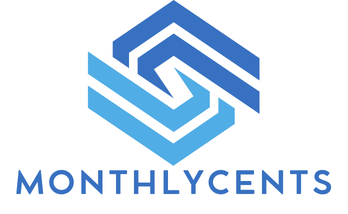Actionable Strategies for an Optimized Month-End Close Process
Implementing standardized workflows and a comprehensive financial closing checklist stands at the core of effective month end close best practices. Document each process step, assign roles, and ensure tasks are prioritized for maximum clarity. This structure not only prevents omissions but also greatly improves reporting accuracy and audit readiness by clarifying expectations for every team member.
In parallel : Transform your team dynamics with workplace personality assessment
Modern finance teams increasingly rely on automation in month end close to streamline operations and reduce manual workloads. Automation tools sync data across platforms, perform real-time reconciliations, and flag inconsistencies instantly—saving valuable time and dramatically lowering error rates. If you are considering transformative solutions, this page explains it in detail: month end close best practices.
Reconciliation strategies serve as a safeguard during monthly closing, helping financial leaders promptly detect mismatches in cash accounts, payables, or fixed assets. Frequent reconciliations paired with clear documentation help to identify discrepancies early and avoid costly adjustments later. Proactive error prevention, through regular flux analysis or automated data validations, leads to more reliable financial statements.
Additional reading : Unlocking enhanced augmented reality shopping: innovative tactics for uk retailers
Managing a structured closing schedule encourages cross-departmental collaboration, clearer deadlines, and less stress. Organizations adopting these structured steps see reduced cycle times, enhanced compliance, and fewer audit findings, reinforcing internal controls and supporting long-term financial stability.
Essential Procedures and Controls for Month-End Close Efficiency
Implementing and Maintaining Robust Internal Controls and Standardized Documentation
Robust internal controls during close protect against errors and promote data accuracy. Applying clear closing documentation standards means every financial transaction and reconciliation step is documented in detail, creating an accessible audit trail. Relying on comprehensive documentation templates and adhering to standard operating procedures for close ensures process consistency and supports regular quality assurance in month end close reviews. This not only enhances accuracy but also simplifies the identification and correction of potential discrepancies.
Ensuring Audit Readiness and Continuous Regulatory Compliance
Prioritizing audit readiness for month end close involves maintaining organized records and a well-defined financial closing checklist. Close process standardization benefits include easier tracking of tasks and faster report generation, both critical for demonstrating month end close compliance. Periodic control assessments provide evidence of compliance, while well-documented reconciliations support ongoing regulatory assurance.
Assigning Clear Roles and Applying Quality Assurance for Data Integrity
Clarity in roles and responsibilities for close establishes accountability at every step of the month end close workflow. Designating team members as preparers, reviewers, and approvers streamlines oversight and reinforces quality assurance in month end close. Ensuring all data validations and reconciliations are performed and reviewed thoroughly is key to maintaining high standards of closing process documentation accuracy, supporting both compliance and reliable financial statements.
Leveraging Technology and Collaboration for a Streamlined Close
Modern month-end closing software tools drive efficiency and minimize errors through process automation and improved data accuracy. Automated reconciliation strategies reduce the volume of manual tasks, directly supporting faster close cycles by rapidly consolidating and validating financial data. Automation in month end close not only accelerates workflows but also increases data integrity, ultimately helping companies maintain audit readiness and minimize financial risks. Implementing leverage technology for faster close empowers finance teams to allocate resources more strategically, limiting the time required for routine reconciliation and documentation.
Aligning finance and accounting teams demands rigorous communication in close process, especially when the timeline is tight. Standard operating procedures ensure roles and responsibilities are transparent, diminishing duplicated efforts or overlooked tasks. Regular training for close enables cross-functional collaboration between departments, establishing a unified approach to meeting closing calendar optimization goals and adapting quickly to regulatory or business changes. Effective communication in close cycle ensures all relevant stakeholders are prepared for period-end reviews, facilitating swift error identification and resolution.
The transition to adopting cloud solutions for close unlocks flexible, real-time access to closing data and documents. Cloud platforms streamline closing period cut-off dates management, automate closing schedule management, and enable collaboration between departments across multiple locations. Closing calendar optimization further guarantees timely reporting and visibility by allowing dynamic updates to closing activities and deadlines, supporting continuous improvement in close process.
Overcoming Common Challenges and Driving Continuous Improvement
Identifying and addressing common challenges and bottlenecks in financial closing
Reducing closing cycle time starts by tackling frequent bottlenecks: late data submissions, team misalignment, and an overreliance on manual work. Addressing common close errors such as duplicate entries, missed reconciliations, or inaccurate accruals is more achievable when detailed closing process bottlenecks are mapped and reviewed each cycle. Financial close team coordination and regular use of a financial closing checklist can prevent recurring mistakes and distribute responsibilities clearly, reducing error rates and burnouts.
Applying ongoing improvement strategies and root cause analysis
Root cause analysis of close delays offers direct insight into repeated obstacles, such as ineffective reconciliation strategies, ambiguous roles, or incomplete documentation. Continuous month end close improvement strategies—regular feedback sessions, post-close debriefs, or technology reviews—keep the workflow agile and responsive. Reducing closing cycle time is more sustainable when past errors are systematically analyzed and corrected before the next cycle, preventing them from compounding.
Enhancing reporting efficiency and data accuracy through best practice communication and feedback loops
Month end close reporting efficiency depends on structured, transparent communication. Best practice communication plans—pre-close briefings, live status updates, and immediate clarification of unclear entries—reduce the risk of error and delay. Continuous feedback loops allow for prompt error prevention in financial close, and improving accuracy in financial reports becomes an iterative part of the month-end close workflow. This approach ensures teams move towards a streamlined, error-minimized cycle every month.











